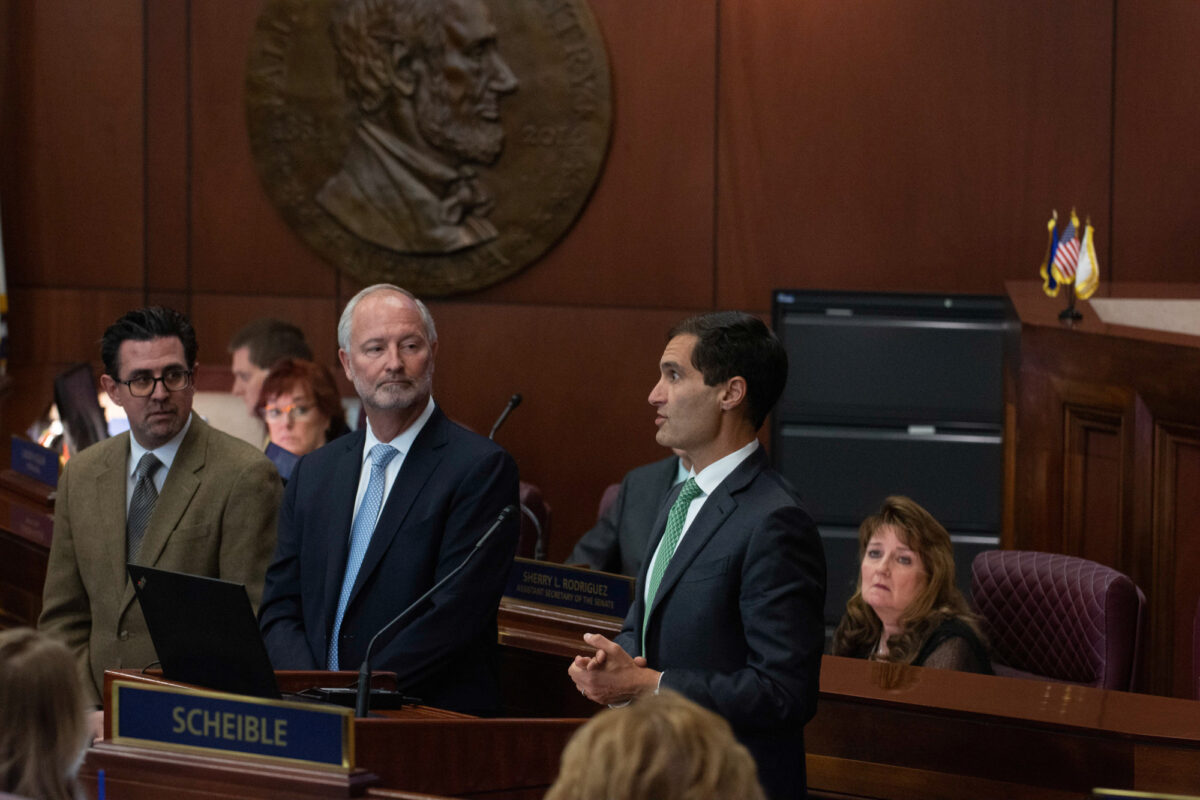Stadium Authority approves community benefits agreement with the A’s

The Athletics have a formal community benefits agreement in place with the Las Vegas Stadium Authority — a document the Major League Baseball team never had in Oakland.
The unanimous vote Thursday by the overseers of the planned $1.5 billion, 33,000-seat stadium is the first of four key documents. The remaining three cover the stadium’s construction, the A’s lease for the stadium and the team’s operating practices for the ballpark.
A’s President Dave Kaval attended the Stadium Authority meeting in the Las Vegas Convention and Visitors Authority (LVCVA) board room. But he didn’t need to make a pitch. Labor officials and Las Vegas business leaders addressed the board in support of the agreement.
“This is something that we spent a great deal of time with the community stakeholders, the unions and all our partners to ensure that we approached it in a thoughtful way,” Kaval said following the vote. “This was an important step in the process.”
Stadium Authority Chairman Steve Hill, who also serves as CEO of the LVCVA and represented the A’s during legislative hearings last year in his role as Las Vegas’ top tourism executive, said the community benefits package “is at the top of the food chain” when looking at similar agreements around the country.
Angela Otto, an attorney with Brownstein Hyatt Farber Schreck, who represented the A’s in negotiations concerning the agreement, told the board the agreement was established as part of the legislation approved last year that included $380 million in public financing for the stadium.
The financial commitment set out in the legislation requires the baseball team to contribute $500,000 annually in cash and in-kind contributions — such as Thanksgiving meals, books for schools and sponsorships — until a year after the team begins play in the new stadium in April 2028.
At that point, the team’s financial commitment will be whatever is larger — $2 million, or 1 percent of the ballclub ticket sales revenue for the calendar year.
During her presentation, Otto pointed out several changes in the community benefits agreement that expanded some of the programs, such as college scholarships the team administers and criteria for internships that include Nevada residency requirements.
“The criteria will include [a] demonstrated commitment to Nevada communities,” Otto said.
She added the agreement “includes things that people have [requested] whether it's ticket donation, appreciation days, scholarships [and] veterans programs.”

On March 8, when the team unveiled designs for the new ballpark, the A’s released a Nevada Community Impact report that detailed $381,000 in direct cash and in-kind contributions to Nevada organizations and community efforts between July and December 2023.
Kaval said the team “had a tremendous amount of community involvement” in Oakland and the Bay Area, but never had a community benefits agreement when the team relocated from Kansas City in 1968. Attempts to build a new stadium in Oakland never resulted in the need to complete a contract on how the team would benefit the community.
“I think this is a really important way for all community stakeholders to engage and create a public-private partnership that works for everybody,” Kaval said.
The package included workforce diversity goals, which require 51 percent of all construction workers for the stadium to be made up of women, minorities, veterans and disabled workers. The A’s will be required to contract 15 percent of work on the stadium to small locally owned businesses.
Two additional sections of the agreement included a minimum financial commitment and the nonfinancial benefits related to the Neon Museum, such as displaying items on the stadium site, and working with the Las Vegas Aviators, the A’s Triple-A affiliate, to coordinate certain community benefits programs.
Kaval said he was hopeful several of the other agreements would be advanced to the Stadium Authority board in May.
